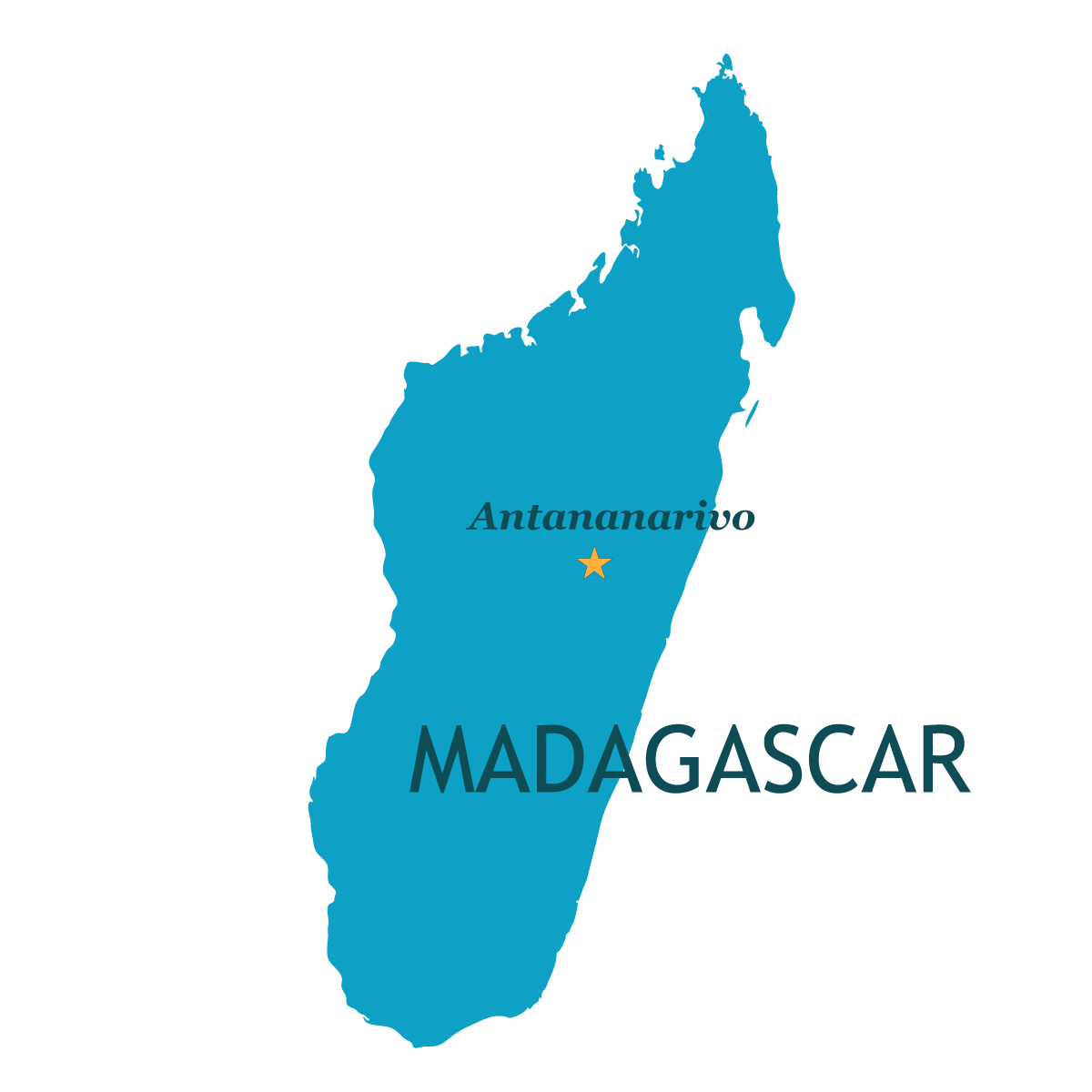
Madagascar
Located off of the southeastern coast of Africa, Madagascar’s natural biodiversity, culture, history, and food are truly unique. The Malagasy people have been absorbing influences from faraway realms for millennia, while maintaining their own identity and developing a colorful and fascinating culture.
Gather your kids and let’s learn about Madagascar!
QUICK STATS
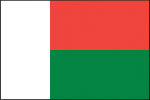
Situated off of the southeastern coast of Africa, Madagascar consists of the Island of Madagascar and several smaller islands. The country is situated in the Indian Ocean, approximately 420 kilometers east of the coast of Mozambique, separated from the African continent by the Mozambique Channel.
A brief history for kids to learn about Madagascar
Historians believe Madagascar was one of the last pieces of land settled by humans. They believe that the first settlers of Madagascar arrived from South Borneo (Indonesia), sometime between 550-250 BC.
The first settlers encountered an abundance of megafauna, including species of giant lemurs and elephant birds. However, by 600 AD, settlers began clearing forests and the central highlands, causing the extinction of many of the island’s unique species.
Arab traders first reached the Island of Madagascar between the 7th and 9th centuries. They introduced Islam, the Arabic script, and other cultural elements to the locals. Their arrival was followed by Bantu migrations from southeastern Africa as well as the coming of the South Indian Tamils. The latter introduced the zebu, a type of long-horned humped cattle. Locals farm zebu to this day. They have a central role in Malagasy agriculture and cuisine.
Portuguese explorers first arrived in the 16th century. They established colonial settlements around the archipelago, traded, and spread Christianity. A century later, French traders started establishing trade posts along Madagascar’s coast as well.
Between 1774 and 1824, the Island of Madagascar turned into a stronghold of European pirates.
The wealth generated by maritime trade sparked the rise of native kingdoms on the Island, with some of them becoming quite powerful by the 18th century. The Merina kingdom was the most prominent of them. Their king, Radama, was officially recognized as the king of Madagascar by the British government. By 1817, Radama concluded a treaty to abolish slavery from the island and introduced European technology, education, and literature to his kingdom.
Madagascar in more recent history
French incursions to colonize Madagascar increased by the late 19th century. Madagascar ultimately became a French colony in 1897 and the Merina kingdom dissolved.
Malagasy anti-colonial movements gained momentum by the 1930s, leading to a peaceful uprising in 1947. In 1960, an independent republic was formed in Madagascar.
Since then, due to economic, diplomatic, and constitutional problems, Madagascar has gone through four governmental transitions. A multi-party constitution was eventually established during the 1990s, emphasizing human rights, social and political freedoms, as well as free trade.
The latest version of the constitution was adopted in 2010 when the fourth and current republic was established.
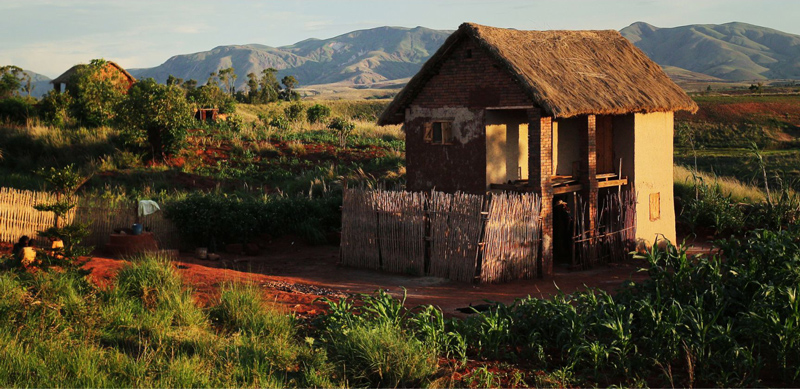
Fun facts about Madagascar for kids
- Madagascar is one of the most biodiverse countries in the world and home to 50% of the world’s chameleons.
- Madagascar’s transportation infrastructure is greatly undeveloped, as only 11% of the roads in the country are paved. The majority of the land consists of agricultural fields, pasture lands, and forests.
- 90% of Madagascar’s wildlife is endemic (not found elsewhere in the world).
Malagasy food
The cuisine of Madagascar is rich and varied, reflecting Southeast Asian, East African, Arab, Indian, and European influences.
Most dishes are rice-based, displaying the Southeast Asian influence. On top of the rice, people typically pour a generous portion of sauce or stew, named “laoka” in Malagasy. Laoka’s main flavor profile is typically either based on tomatoes or coconut milk. A traditional meat consumed by many is zebu (humped cattle). These animals were introduced to the Malagasy people by East Africans.
The most common flavoring ingredients in Malagasy cuisine are garlic, ginger, curry powder, vanilla, tomatoes, and coconut milk. Some coastal areas also use turmeric and cloves, reflecting Middle Eastern influences.
Madagascar’s national dish is romazava, a laoka broth of beef and anamalao, a leafy green that is native to the archipelago. The leaves of anamalao produce a mild analgesic (numbing) effect.
Many of the condiments of Malagasy cuisine are of Indian origin. Mango pickles and lassary (a salad of crunchy vegetables in a vinaigrette sauce) are popular examples.
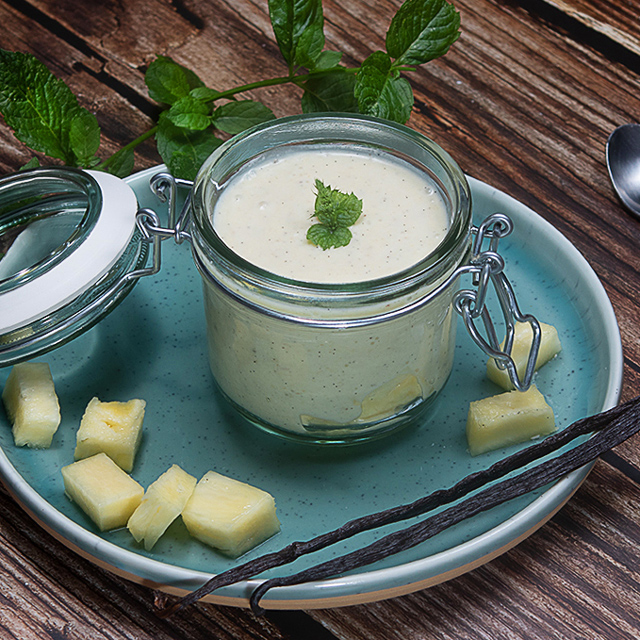

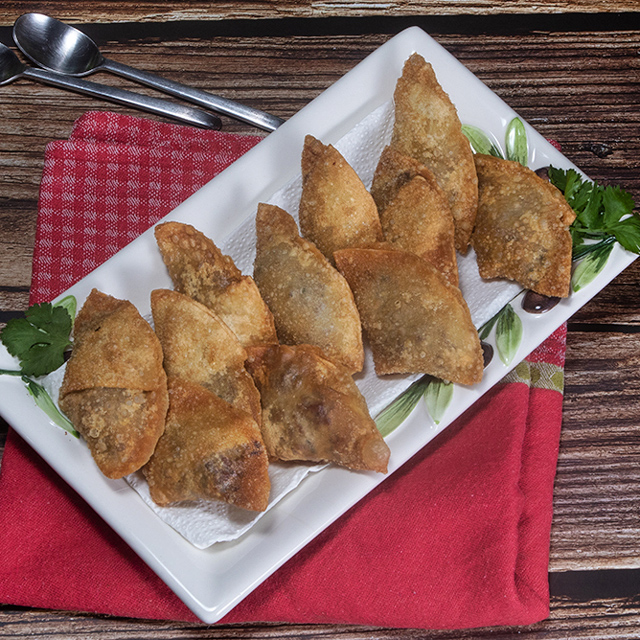
What do the Malagasy eat? Facts for kids to learn about mealtime in Madagascar.
The typical Malagasy diet is highly dependent on rice as a main source of carbohydrates. They typically eat the rice with a laoka (literally “side dish”) or as a porridge.
Between meals, they may eat local street food snacks such as fried pastries (samboza) and dried bananas.
Breakfast (6-9 am)
Mofo gasy translated “Malagasy bread”, is a popular street food. The bread is made from sweetened rice flour and shaped into small pancakes. The Malagasy often eat the bread for breakfast alongside a cup of coffee.
Another popular breakfast dish is sosoa, a soupy rice porridge.
In restaurants in Madagascar, you may find a banana cake made from super sweet, fresh bananas served for breakfast.
Lunch (12-2 pm)
For most Malagasy people, lunch is the main meal of the day. It typically consists of a stew or a brothy sauce (laoka) served on top of rice, a dish known as vary sy laoka (literally “rice with side dish”) in Malagasy. The laoka may be a dish like coconut chicken. And you may find a small bowl of tomato salad (lasary voatabia) served on the side.
If a family serves a dessert, you may find local fruit like bananas or pineapples. Or you may find a ‘sweet bread’, like this pineapple cake.
Dinner (6-8 pm)
The Malagasy commonly eat vary sy laoka for dinner as well. However, they may substitute rice porridge (vary sosoa) for the base of “dry” white rice (vary maina) for a lighter meal.
Another popular dinner option is vary amin (‘rice and greens’). This is a traditional porridge of rice, meat, and chopped leafy greens.
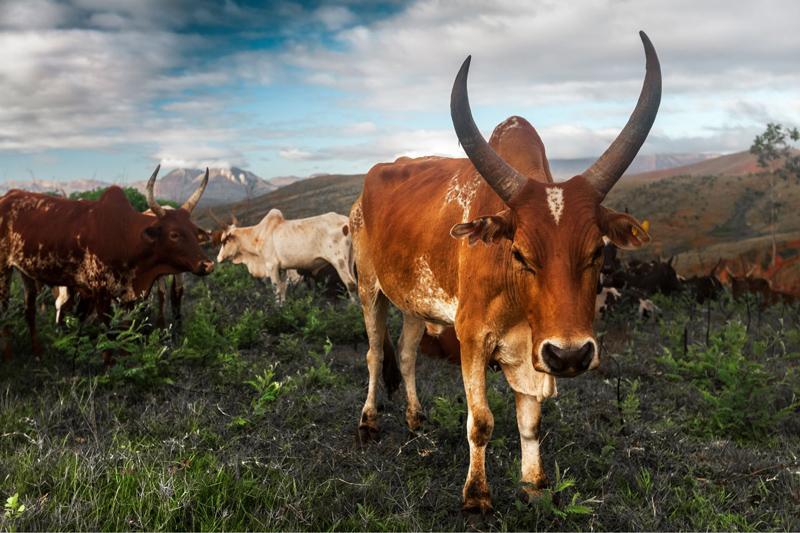
Food etiquette in Madagascar
In general, table manners in Madagascar follow those of most European cultures, with one exception: most Malagasy people still prefer to eat without cutlery, using the right hand.
If joining a shared meal, it is polite to start the meal only when all guests are seated.
Small talk is common among friends and family and the Malagasy typically eat at a moderate and relaxed pace.
Malagasy food by region
More than 90% percent of Madagascar’s population are ethnically Malagasy. However, the Malagasy people are officially divided into 18 ethnic groups, each with their own traditions, folklore, and cuisine.
Additionally, the regional cuisine of Madagascar also varies according to the natural conditions of different regions (comparing the western coastal area to the central highlands, for instance.)
Let’s take a look at a few of these differences.
Merina Cuisine
The Merina people are the largest ethnic group in Madagascar, mainly residing in the central highlands. Rice has a central role in Merina cuisine, economy, and folklore.
Similarly to some East Asian languages, the expressions “eating a meal” and “eating rice” are identical in the local dialect.
Beef (zebu) is the most common meat to cook with, usually used to make broth for laokas such as romazava.
Tandroy Cuisine
The Tandroy are a nomadic ethnic group that inhabits a large part of the arid southwest of the country. They are one of the few Malagasy subgroups that don’t consume rice regularly.
Instead, the Tandroy diet is based on cassava, maize, and fermented dairy products, usually made from zebu milk.
Another important staple of Tandroy cuisine is millet. They often serve it in fresh milk or flavored with crushed peanuts.
Betsimisaraka Cuisine
Residing on the eastern coast of Madagascar, the Betsimisaraka people are the second largest ethnic group in Madagascar.
Contrary to the Merina people who live in the hinterlands, the Betsimisaraka’s main source of protein is seafood, usually stewed in a coconut-based broth and served with rice or cassava.
Another popular coastal specialty is sambo – fish and rice packets, cooked together in banana leaves.
With banana trees in abundance in this region, this banana-coconut cream dessert would be a loved treat.
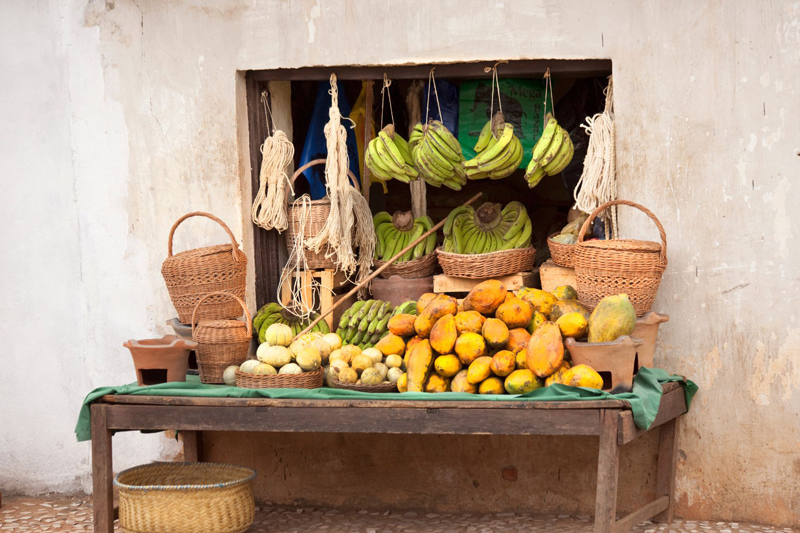
Holidays in Madagascar
Discussing holidays is a wonderful way for kids to learn about Madagascar. The annual holiday calendar of Madagascar consists of tribal ceremonies, Christian holidays, and national memorial days. Many around the country celebrate Christmas, New Year’s Day, and Easter. But you will also find indigenous cultural celebrations and traditions that have been a central part of Malagasy culture for centuries.
Alahamady Be (New Year’s, March)
The Malagasy celebrate their traditional new year every March, on the day after the last year’s 12th full moon. Celebrations last several days and activities such as dancing, music performances, and delicious feasts take place.
The arrival of the new year symbolizes new beginnings, forgiveness for all previous grievances, and the bond between the different generations.
Hiragasy (July)
Mainly practiced by the Merina ethnic group, Hiragasy is a day-long festival of music, dance, and oratory competitions between different families and troupes.
Such oratories, also known as Kabary, are based upon Malagasy oral literature, Hainteny.
People hold Hiragasy events throughout the year, however, the biggest event usually takes place during July.
Famadihana (Dates vary by family)
Famadihana (or ‘turning of the bones’) is an ancestor veneration ritual of the Merina tribe. Each family holds a Famadihana about every three to five years.
During the ritual, people take their ancestors’ bodies out of their crypts. They dress the bodies in new burial wrapings and the people dance with them, accompanied by live music. Before nightfall, they return the bodies to their crypts, facing a different direction than before.
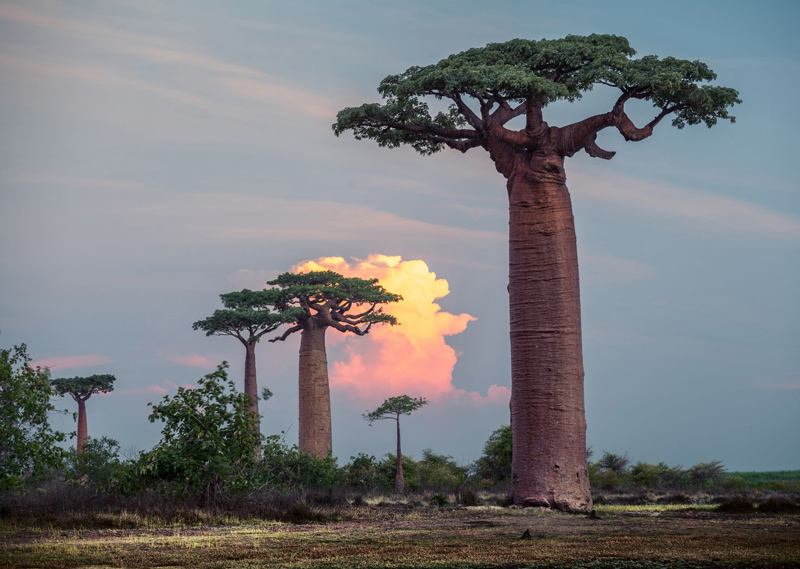
At-home ideas for kids to learn about Madagascar
As a part of your home-school Madagascar unit study or as a supplement to your child’s Madagascar unit at school, try some of these ideas at home.
- Burnt rice tea is a common beverage in Madagascar. Try it and see what your kids think!
- Madagascar has wildlife unique from any other place on earth. Have your kids choose an animal native to the island and learn about it.
- A common street-food snack in Madagascar is koba akondro a cake of banana, peanuts, and rice flour wrapped in banana leaves. Get the kids into the kitchen and give this treat from Madagascar a try! (You can find rice flour and culinary banana leaves on Amazon. )
- Bananas are incredibly popular in Madagascar. Imagine the flavor of a fresh banana, not picked green in preparation for a long voyage to your grocery store. Try some honey-baked bananas, a common treat in parts of Madagascar.
- Famadihana is a burial custom in Madagascar. It introduces us to a different and interesting perspective on death, the circle of life, and social norms. Other cultures around the globe hold rituals around death as well. For example in the Indonesian Archipelago and Central America, to name a couple. Have your older kids choose an end-of-life ritual from another culture and compare it with Famadihana.
Address their similarities and differences and ask yourself, how do you feel about such a ritual? What can we learn from it? - This Is The Tree by Miriam Moss is a wonderful read-aloud book for your kids about the baobab tree native to Madagascar.



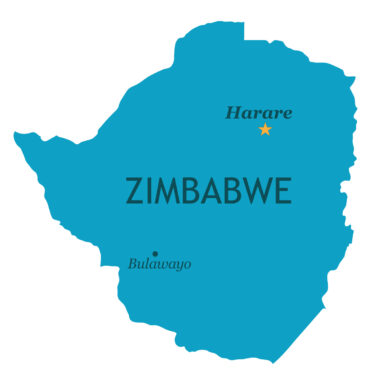


Have a Question/Comment?